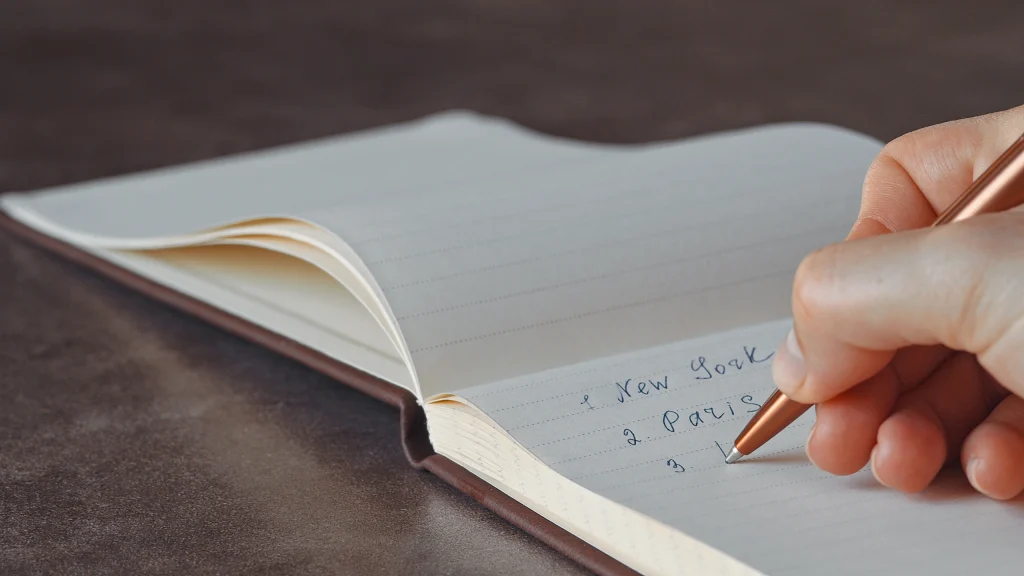
In the digital age, where typing has overtaken writing, beautiful penmanship remains a timeless skill. Whether you’re writing a heartfelt letter, creating art, or simply jotting down notes, good handwriting can make a significant impression. This guide will provide you with practical handwriting tips and introduce you to various writing instruments like ball pens, gel pens, and roller pens to enhance your writing experience.
Why Beautiful Handwriting Matters
Beautiful handwriting is more than just aesthetically pleasing; it reflects attention to detail, patience, and personal expression. Handwriting can also improve memory retention and cognitive development, making it an essential skill worth mastering.
Handwriting Tips for Beautiful Penmanship
- Choose the Right Paper: Start with smooth, high-quality paper. Paper with a slight texture can help control your pen strokes, but too much texture can cause ink to bleed or skip.
- Posture and Grip: Sit with your feet flat on the floor, and keep your back straight. Hold your pen lightly between your thumb and index finger, allowing your middle finger to support it. Avoid gripping the pen too tightly as it can cause hand fatigue and affect your handwriting quality.
- Slow Down: Rushing your writing can lead to sloppy penmanship. Take your time to form each letter carefully.
- Consistent Practice: Like any other skill, handwriting improves with practice. Dedicate a few minutes daily to practice writing the alphabet, words, and sentences.
- Use Guidelines: Writing within lines or using graph paper can help maintain consistent letter size and spacing.
- Letter Formation: Pay attention to the shapes of your letters. Practice writing each letter correctly, focusing on their heights, slants, and loops.
- Spacing: Ensure even spacing between letters and words. Proper spacing can significantly enhance the readability of your handwriting.
- Evaluate and Adjust: Regularly review your writing to identify areas of improvement. Don’t hesitate to make adjustments to your writing style as needed.
The Best Writing Instruments for Beautiful Handwriting
Different pens can drastically affect the quality of your handwriting. Here’s a look at some popular options:
- Ball Pens
- Advantages: Ball pens are durable, less prone to smudging, and suitable for everyday use. They are ideal for quick note-taking and general writing tasks.
- Examples: Bic Cristal, Pilot EasyTouch
- Gel Pens
- Advantages: Gel pens provide smooth, vibrant lines and are available in various colors. They are perfect for decorative writing and crafts.
- Examples: Pilot G2, Sakura Gelly Roll
- Roller Pens
- Advantages: Roller pens combine the smooth ink flow of gel pens with the precision of ball pens. They are excellent for detailed writing and longer writing sessions.
- Examples: Uni-ball Vision Elite, Pilot Precise V5
Exercises to Improve Your Handwriting
- Alphabet Drills: Write each letter of the alphabet repeatedly, focusing on maintaining uniform size and shape.
- Word Practice: Choose a few words and write them repeatedly. This helps with letter connection and word spacing.
- Sentence Writing: Practice writing complete sentences. This exercise helps improve flow and consistency.
- Copying Text: Copying passages from books or articles can help improve your handwriting style and fluidity.
- Free Writing: Spend a few minutes writing about your day or any topic of interest. This helps to make handwriting a natural and comfortable process.
Mastering handwriting is a journey that combines the right techniques and tools. With patience and consistent practice, anyone can develop beautiful penmanship. Whether you prefer ball pens, gel pens, or roller pens, choosing the right writing instrument can significantly enhance your handwriting experience. Embrace the process, and enjoy the art of writing by hand.
